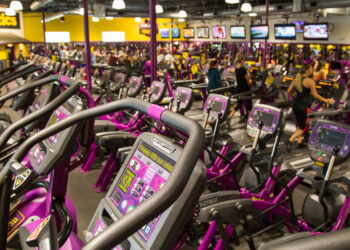When Charlie Graff opened his first health club, it was your typical big-box style gym. The 10,000-square-foot facility featured the traditional free weights, cardio area, studios, childcare and locker rooms. Six years into running this location, Graff began to notice a pattern.
“The people that were the most loyal customers were the ones that were participating in our group exercise classes and our personal training programs,” he explained. “We had the highest retention out of them, they had the best results and they were our biggest referrers of new clients.”
Graff decided to take this large, traditional facility and shrink it down, creating a new gym, CrossTown Fitness, focusing on the most loyal customer base. “So essentially we took what we thought were the best parts of this big-box gym and trimmed it down into CrossTown Fitness,” said Graff. “It is group exercise based, functional interval training classes, personal training and then we also have a café that is open to the public, but also services members.”
CrossTown Fitness now has two locations in Chicago, with plans for expansion in the future. Graff explained they are actively looking at spaces around the city to open up a third and fourth location. Their goal is to open a club a year for the next few years. Then Graff said they are also packaging CrossTown Fitness into a franchise option starting in 2017.
According to Graff, there are have been several factors that have led to the success of CrossTown Fitness. First is its top-notch staff of trainers. “Our personal trainers are all full-time fitness professionals that have college degrees in exercise science, kinesiology, nutrition, anatomy and then they also hold multiple certifications for group exercise and personal training,” added Graff. “I would say about 90 percent of our personal trainers are also partnered up with national, even worldwide, brands like Nike and Lululemon and have sponsorships or are ambassadors for those brands.”
Another factor that separates CrossTown Fitness from the competition is its programming. When opening the gym, Graff focused on what they did best, which is functional interval training classes and personal training. All classes are scalable, so any fitness level can jump in without intimidation.
Finally, Graff explained their strong sense of community has fueled their progress in the industry. “We have been able to cultivate a really cool community through our members,” he said. “It is not just a place for them to come workout, but we do events through the week and month inside and outside of the club so people can get together and socialize. It brings together like-minded individuals to decompress and have fellowship together. So, there is a really cool community aspect too.”
When it comes to running a successful club, Graff said it is important to recognize that you can’t do everything. “There are two big parts to running a successful club, one is the business side and the other is the fitness side,” explained Graff. “I went out and hired a fitness director who focuses on everything that has to do with the classes and personal training. I focus 100 percent of my attention on the operations. You need to be aware of what your strengths are and what your weaknesses are and then try to supplement that with good people around you.”
Stay ahead in the fitness industry with exclusive updates!
Emily Harbourne is the former assistant editor of Club Solutions Magazine.











Congrats on the customers response and success, I would not consider to 10,000 sq ft to be classified as a “big box space”,